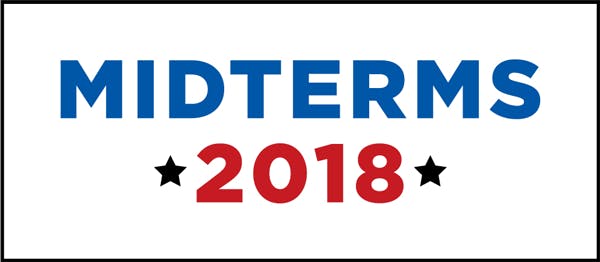On Saturday, November 3, three days before the midterms, 200 volunteers gathered in Modena, New York, to canvass for Antonio Delgado, an African American lawyer and first-time congressional candidate. A local field staffer, a cheery young man named Todd, told me that so many people had shown up around the district to help Delgado unseat incumbent Republican John Faso that the campaign was able to knock on 65,000 doors that day, nearly the same number of votes cast in the district during the last midterm election. The next day, Delgado’s supporters hit another 50,000—a small part of a massive surge in organizing that took place across the country.
On Tuesday, Delgado was elected in a Democratic wave that (nearly) achieved the scale the party had hoped for. The wave crested in formerly Republican-leaning House districts all over the country, lifting first-time candidates like Abigail Spanberger in Virginia, Mikie Sherrill in New Jersey, and Kendra Horn in Oklahoma, and ultimately delivering the House to Democrats for the first time since 2010. It wrested seven governorships from Republicans, and while the wave wasn’t big enough to lift Andrew Gillum in Florida or Beto O’Rourke in Texas, they demonstrated unexpected strength in their campaigns.
There will be many explanations for these victories, but the sheer size of the volunteerism was clearly a deciding factor. The mobilization was not merely unprecedented for a midterm; it reached levels typically seen only in a presidential year. More important, activists developed new and different approaches to mobilizing the volunteers who were phone banking and knocking on doors this fall. Traditionally, most electoral organizing has been run through campaign committees that command powerful lists of millions of activists, donors, and volunteers. (Barack Obama, for example, had 13 million names, 3.95 million donors, and 35,000 volunteer groups on his 2008 list.) That model was already breaking down in 2016, with outside groups like Color of Change, Feel the Bern, and 350.org operating independently of the Democratic establishment. Two years later, however, liberal organizing has now spread out to dozens of independent national groups and thousands of local ones, most of them completely new and not directly connected to the party.
It didn’t have to be this way. Barack Obama’s field operation in 2008 was the best in a generation, but at its root, it was still conventional, an army commanded by field generals who closely managed its actions. Although the arrangement gave the Obama campaign highly effective control, it meant that when he was elected, his former campaign manager, David Plouffe, could mothball the entire apparatus, folding Organizing for America, and its 13-million-member email list, into the Democratic National Committee as a fully controlled subsidiary—a choice that sapped grassroots energy from the Democratic Party and contributed to its losing 968 state legislative seats over the next eight years.
After the disaster of Trump’s election, there was no organizing structure in place to come rescue the party. Into that vacuum came a new cohort of activists. To begin with, older women and younger but more experienced Democratic campaign staffers launched Indivisible. From a Google Doc started by a group of young congressional aides, it spawned 6,000 local chapters (at least two in every congressional district). The Women’s March prompted the launch of thousands of local huddles. And soon, a long list of new groups emerged to direct campaign knowledge, data, and resources wherever they were most needed.
The most notable aspect of Democratic midterm organizing in 2018 was that it operated without any central command. It was more like a swarm than an army, surging to places that traditional Democratic consultants never bothered to go. In Texas, Beto O’Rourke’s Senate campaign, which nearly brought the first statewide win to a Democrat there since 1990, hired people like Bernie Sanders’s deputy digital director, Zack Malitz, and built a large paid staff of 800, focusing on one main goal: a massive, decentralized base of volunteers. At the end of October, the O’Rourke campaign reported that its supporters had made 19 million phone calls to Texas voters, and sent more than one million texts each day. Nationally, Democrats were sending so many texts that Ann Lewis, MoveOn’s chief technology officer, has said that countrywide cellular networks were overloaded. On the weekend before Election Day, MiniVAN, an app Democratic canvassers use to keep track of their interactions with voters, was trending on the Apple store’s top ten list.
The fundraising landscape has also become more decentralized, even as billionaire megadonors like former New York Mayor Mike Bloomberg and Tom Steyer spent heavily on the election. ActBlue—a Democratic online fundraising platform that allows people to send small donations to a wide range of candidates or causes, not just ones prioritized by the national leadership—processed a record 7.7 million donations between July and September, and the $385 million raised on the platform was almost five times the amount collected during the same period in the last midterms. Data for Progress—a small think tank co-founded recently by Sean McElwee, a New York journalist best known for coining the “Abolish ICE” slogan—worked with Run for Something and FutureNowUSA (two other new groups) to create “Give Smart” lists of strategic state legislative races where Democrats might be able to pick key seats to tip control of a chamber. Over a few days in October, following a few tweets from @DataProgress, some $750,000 flowed to the accounts of candidates who had previously been operating on small budgets.
Volunteers poured in, too. On the day before the election, Mobilize America, a new clearinghouse for volunteer organizing that was used by nearly 500 campaigns this cycle, reported that 370,000 volunteers had used its platform to sign up for 737,000 shifts over the course of the cycle, nearly half to canvass. (The real level of engagement was likely considerably higher, as many people brought a friend or took on an extra shift.) All told, according to organizations like Movement Voter Project, which raised more than $12 million for over 350 local groups, and Action Together Network, which connects more than 800 leaders across every state, the number of volunteers mobilized over the last 18 months exceeded two million people—nearly matching Obama’s 2.2 million in 2012. The left, in short, has rebuilt the muscle he let crumble after his first campaign.
That most of these new groups stand outside the main party structures is significant. No politician or campaign operative can control or dismantle them. That, in and of itself, is a major development, especially for the left, which has struggled to get a foothold within the Democratic establishment. Two years ago, most of these groups didn’t even exist. And yet this cycle, they were able to mobilize millions of previously disengaged voters and train thousands mostly on their own steam. That can only bode well for 2020. It’s possible, of course, that some of the energy of the new groups will fade after the midterms. But having experienced a degree of success, these organizers are unlikely to disappear entirely, and will keep pulling the Democrats forward in ways that can’t yet be predicted.

